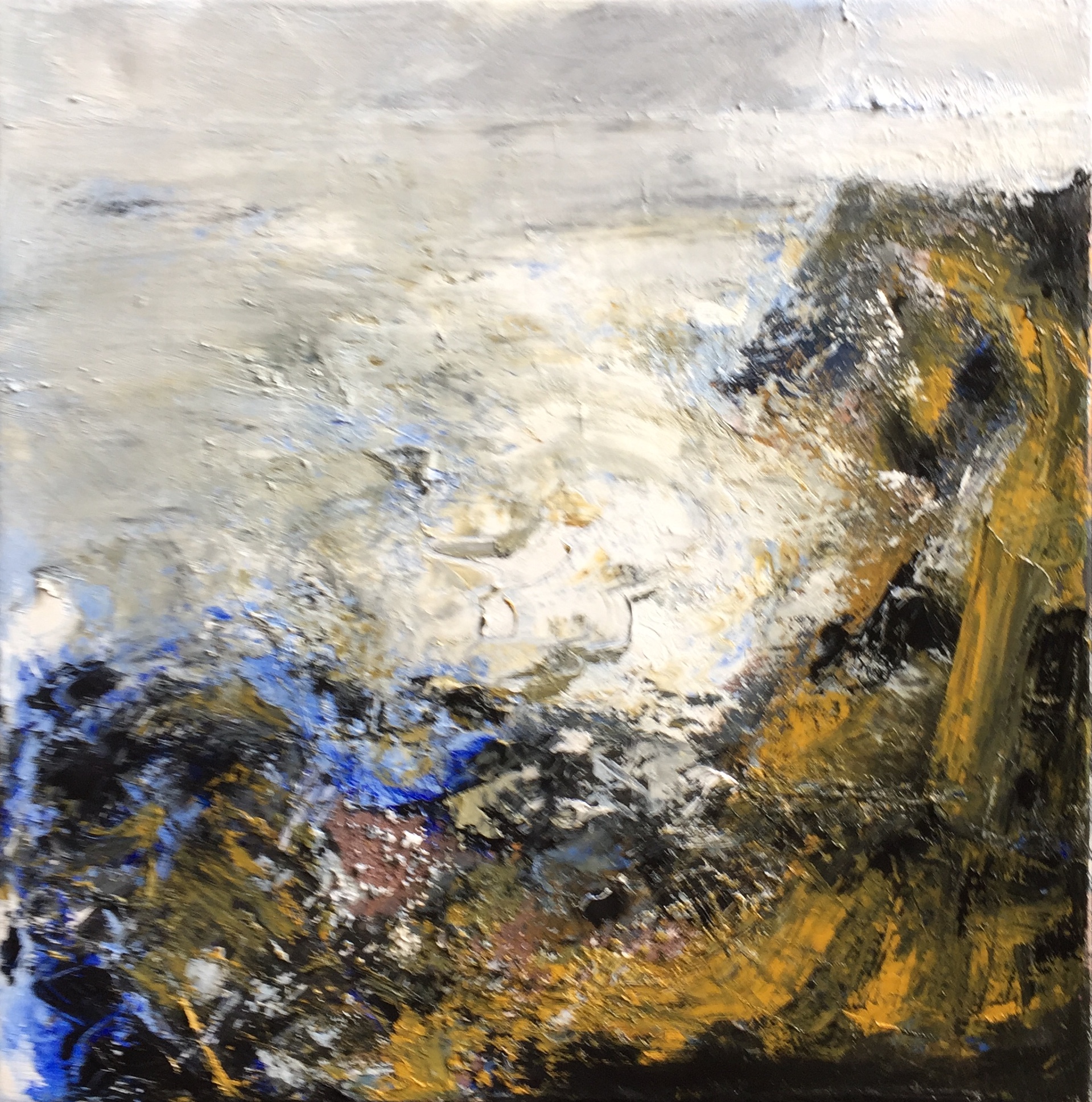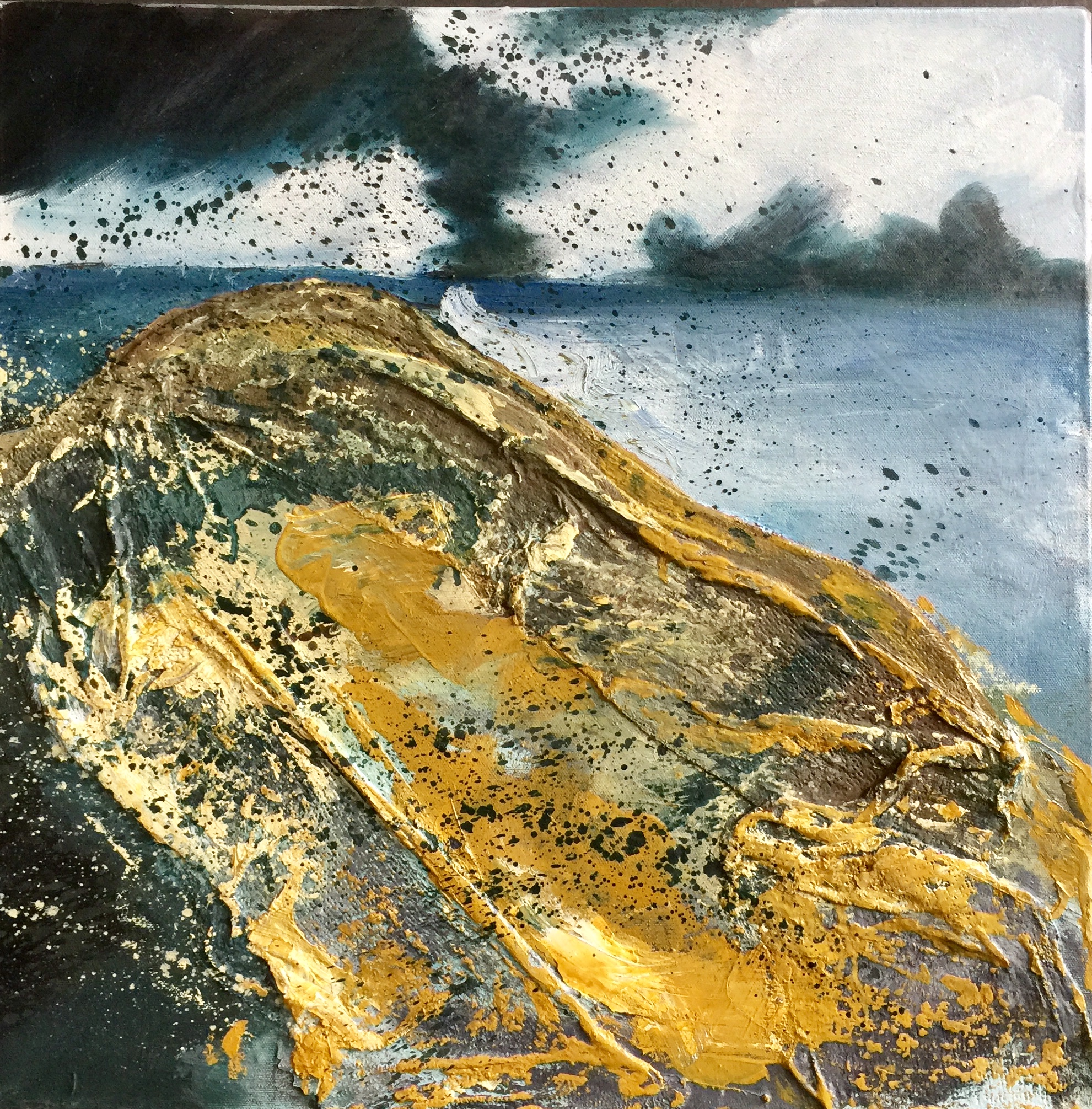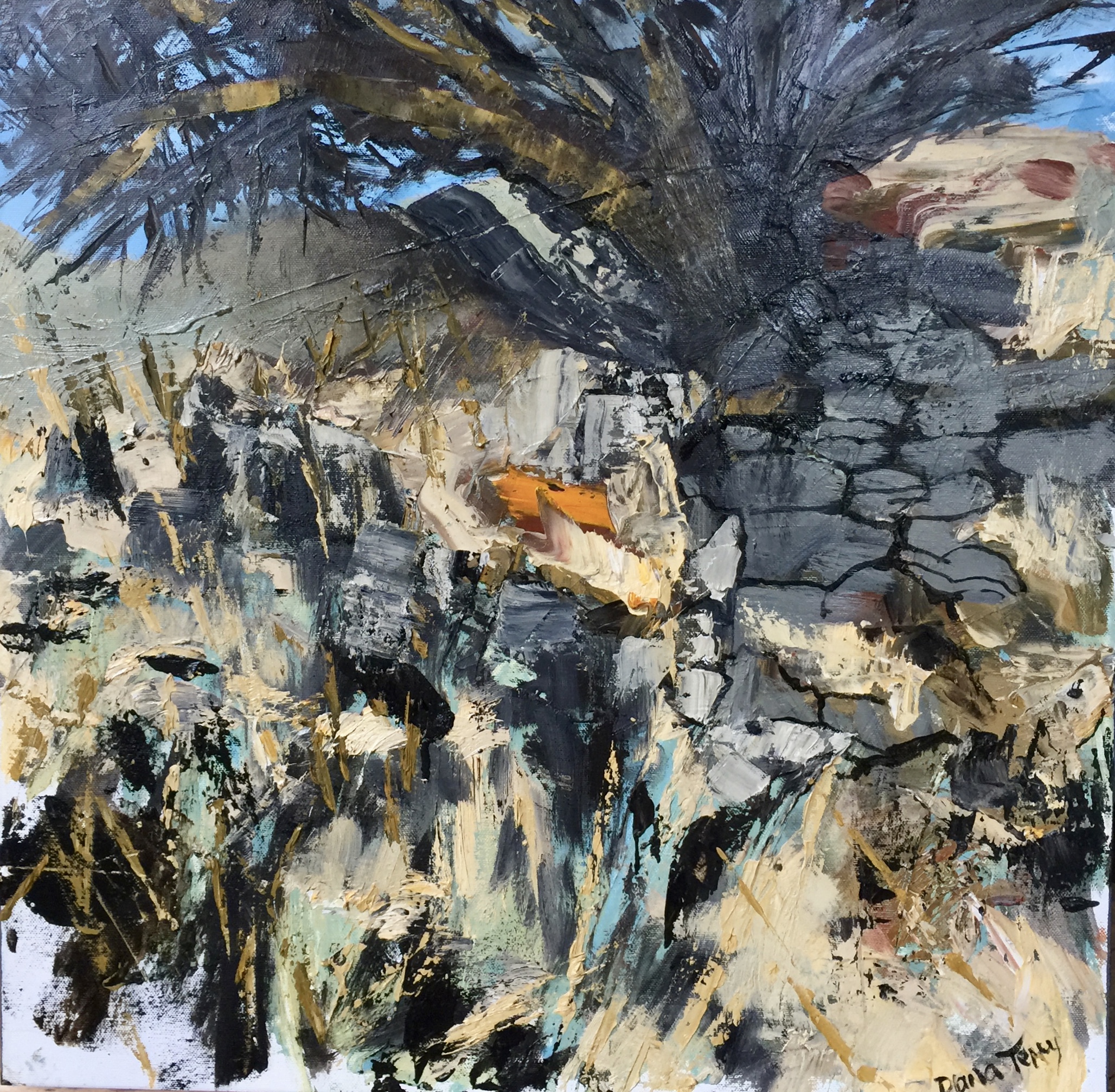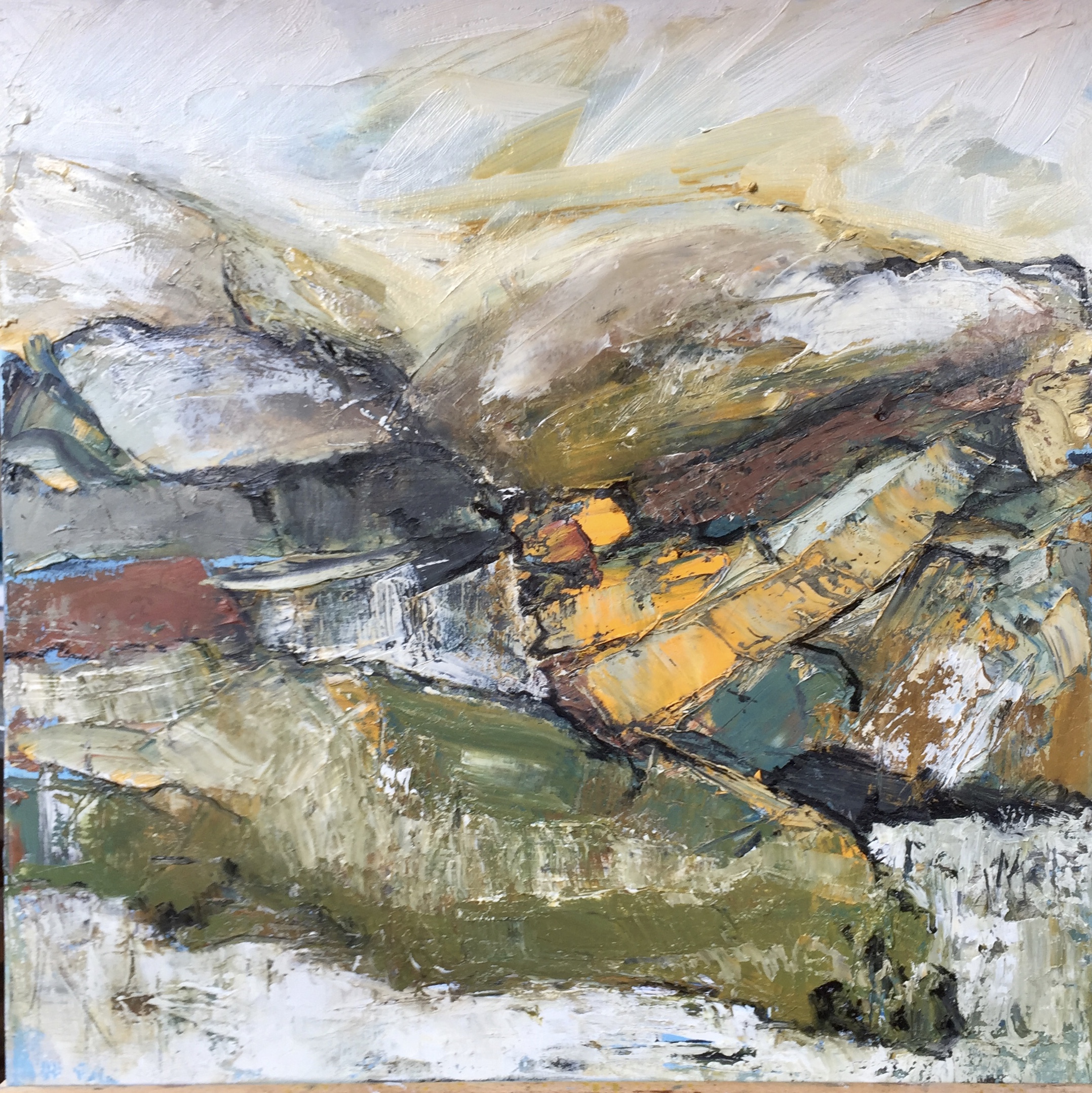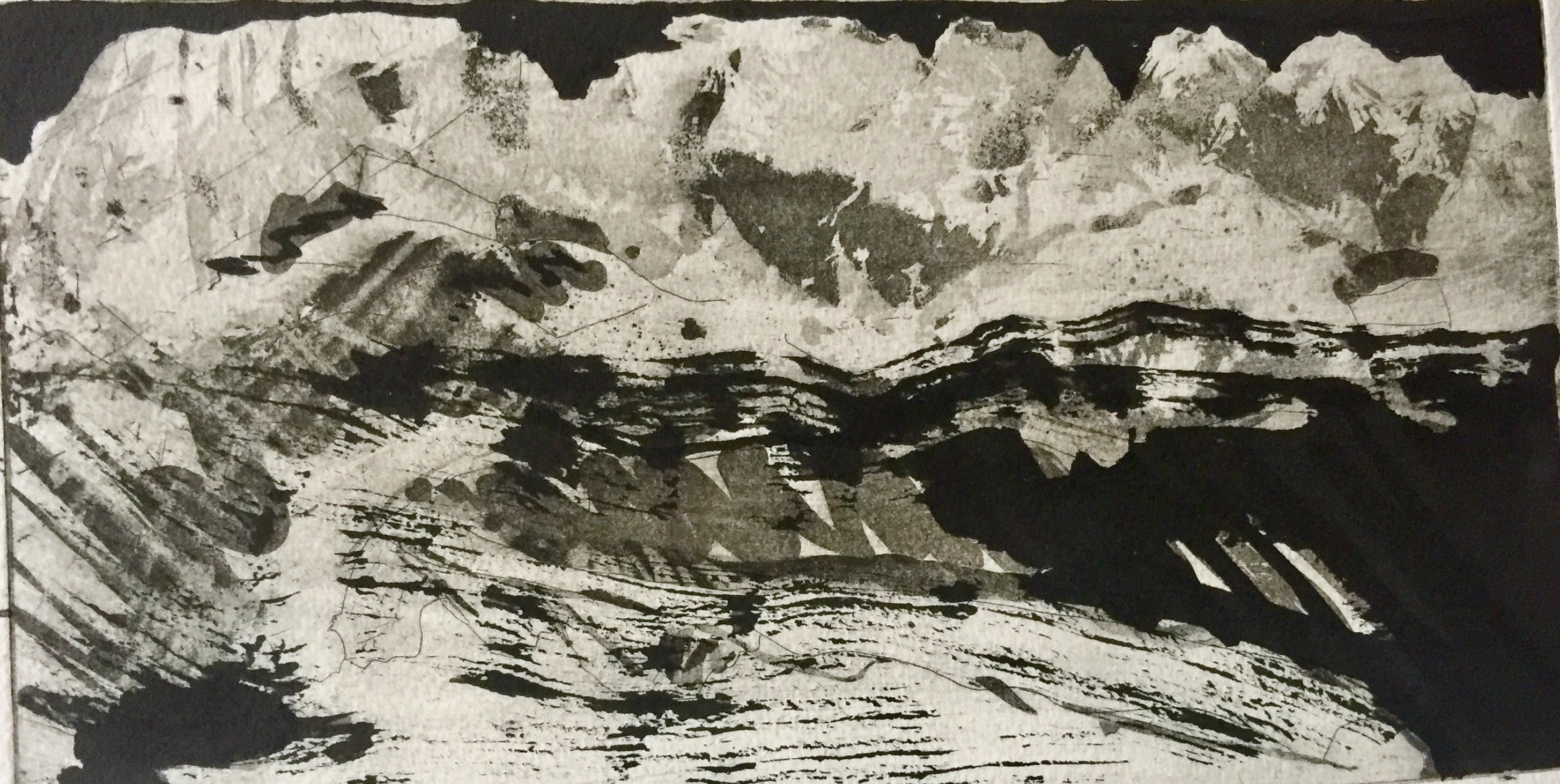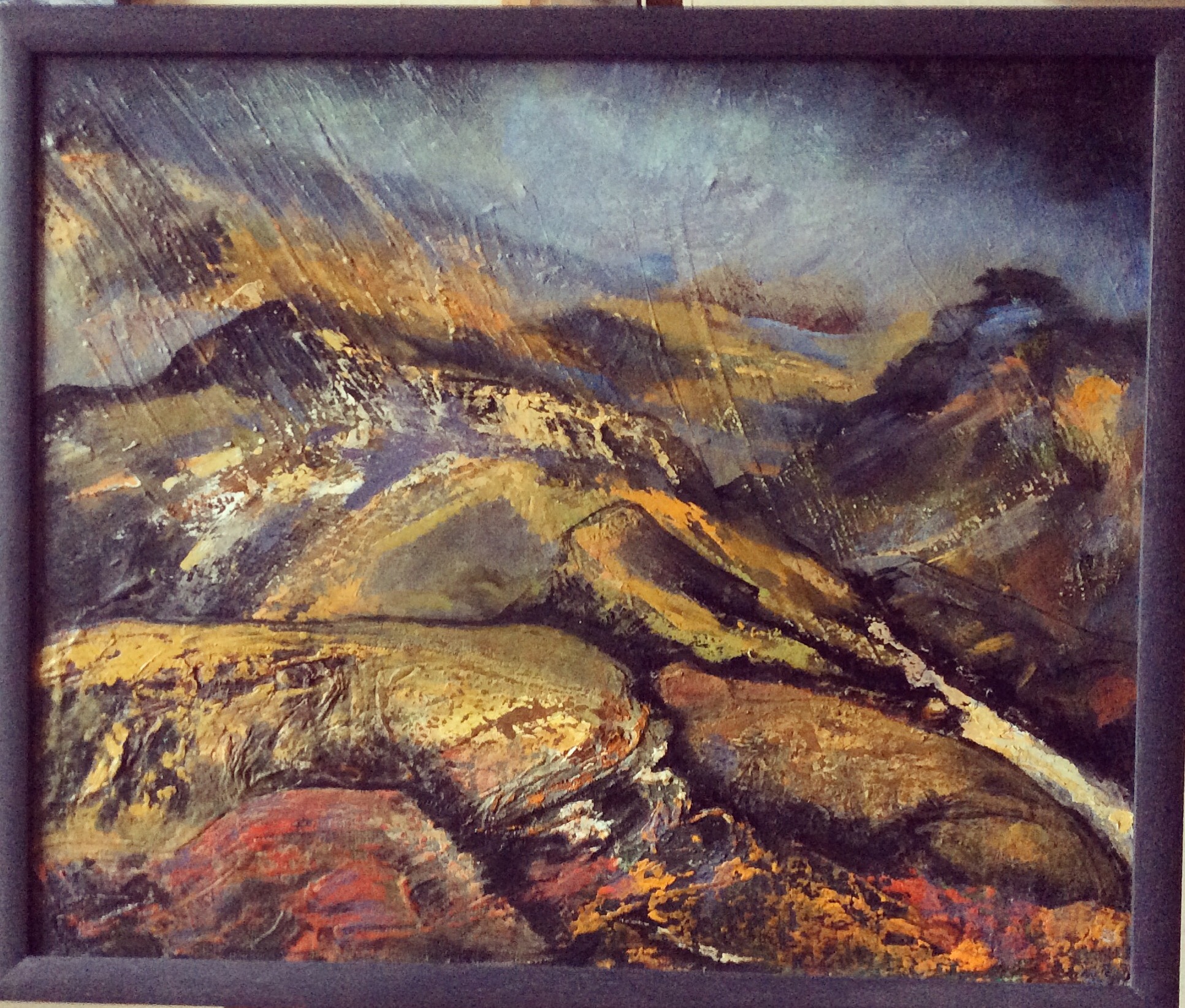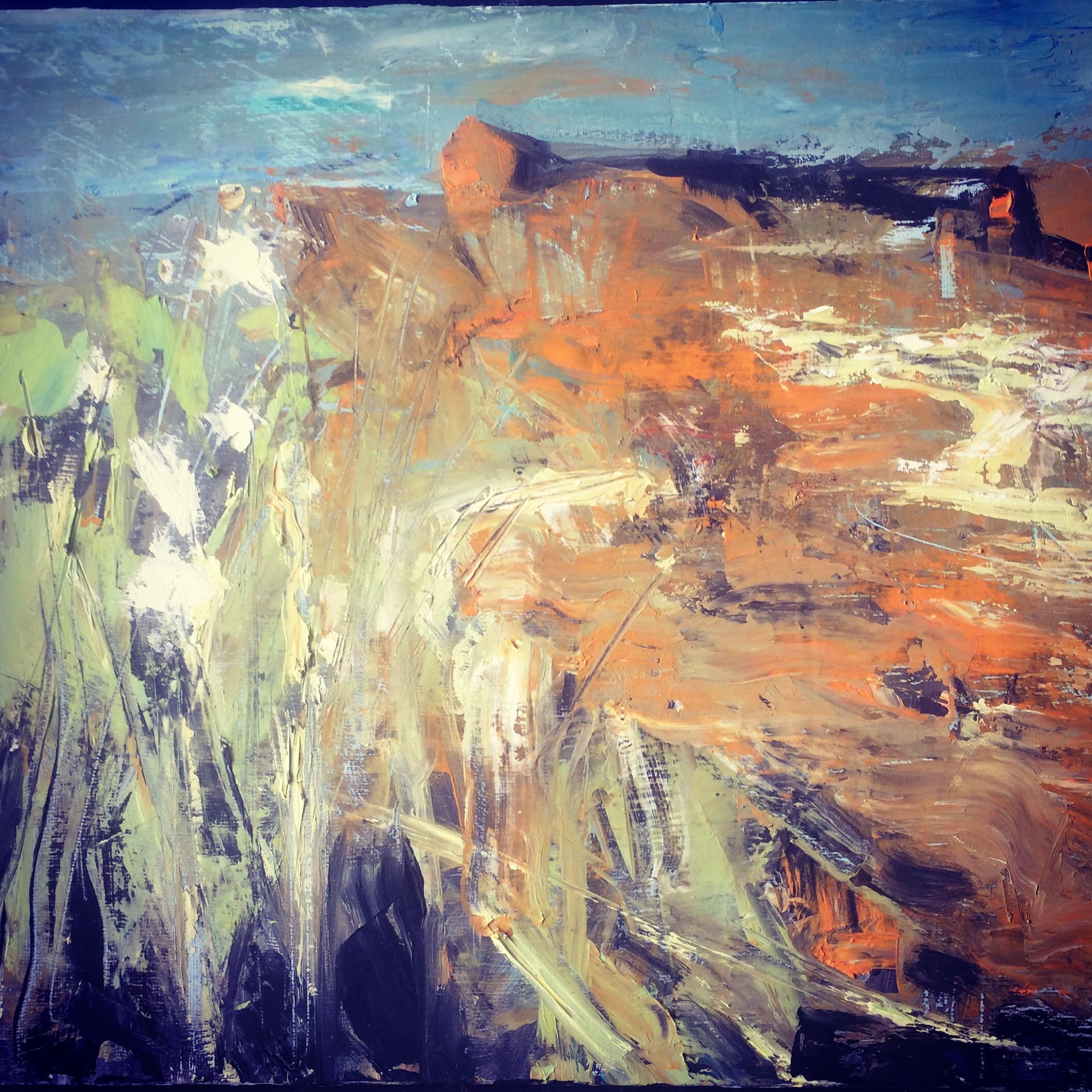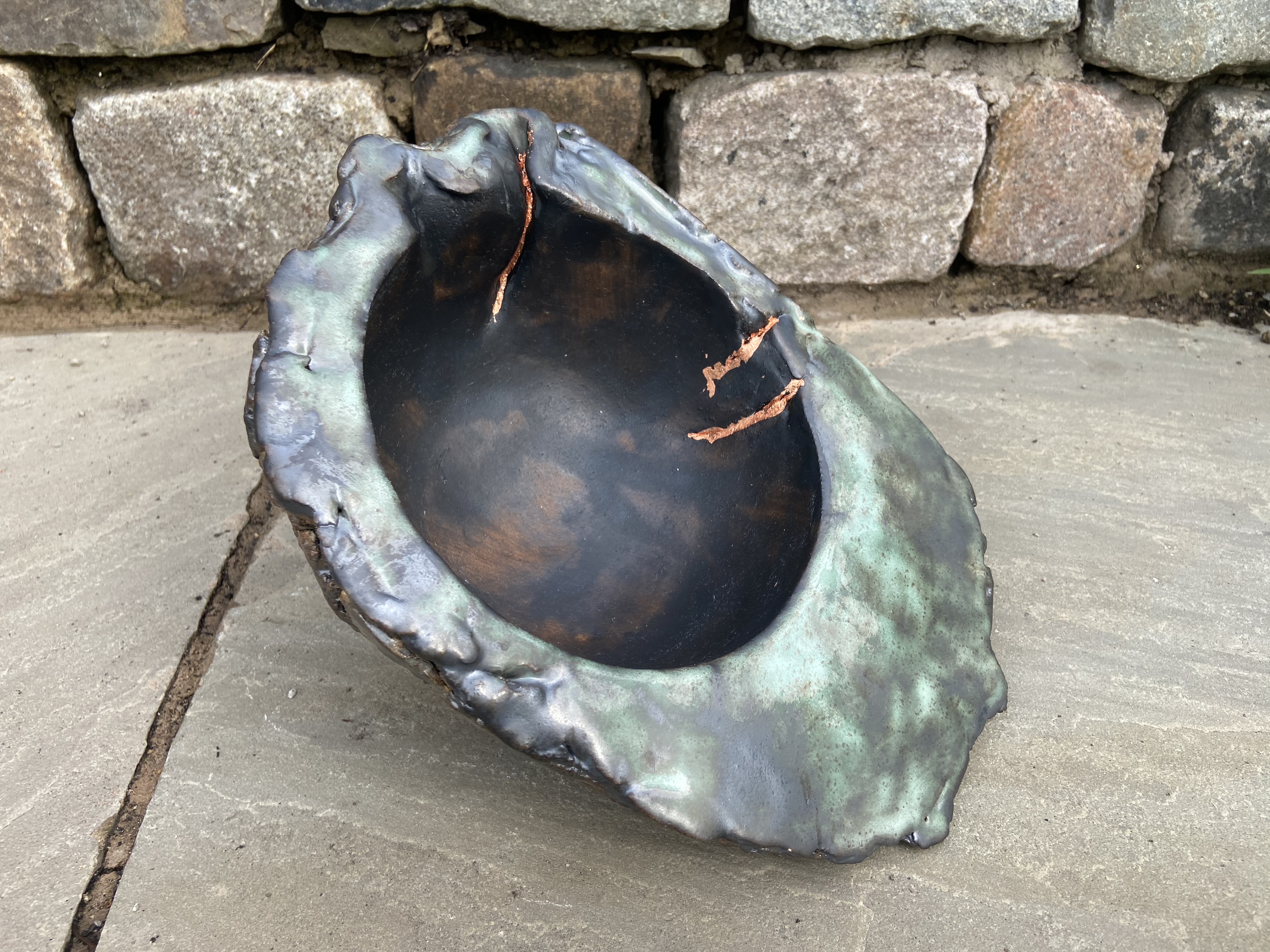Diana Terry Greater Manchester, United Kingdom
Diana Terry works in drawing, painting and sculpture to explore how art can embody thought and emotions. With a background in teaching alongside her professional art practice, she has exhibited extensively including at Merzbarn, Scotland, Kolaj Fest, New Orleans, and The Mall Gallery, London, as well as being selected for the New Light Prize Exhibition.
While my drawings, paintings and ceramics engage with the present moment, I hold a profound interest in the depth of time and the interconnectedness of all things. I aspire to imbue my artworks with these dualities, juxtaposing the immediate with the eternal. I use to talk a lot about the everyday and the overlooked – This was my way of trying to show what is special about moment to moment awareness, that we are constantly surrounded by beauty, and that the important aspect of what I had been doing was the act of being aware. I want to reinterpret the imaginary landscapes and figures weaving a path between dreams and fantasies. A recent series has evolved from figure groups based around the concept of coupledom.
I have come to understand that what I am talking about is more mysterious than I thought – that not everything that exists, is able to appear in this space we call our reality. You cannot see it by looking. Stop looking and you will find it. If you could look backwards there it would be and I find it in a more meditative state of exploration and experimentation. It was in this state that I decided to render the noises that are in my head most of the time.
A current focus of my artwork is expressing my lived experience of becoming profoundly deaf to the point where I am now completely dependent on implants to communicate. I have developed a process in which I reflect on my experiences and feelings related to tinnitus, ear infections and hearing loss then express these feelings through drawing and other media. The result is a very tangible, visual record of my own experience.
What I love about paint and clay is that they can absorb and transmit a series of thought and emotions. My work has a fictional space, an invented abstract space that holds all the contents together - but I think that anything can go into that space, from heartfelt expressive marks to deliberately fashioned self-conscious brushstrokes to intensely rendered rock surfaces. The textures are akin to precipices, cliffs, caves and quarries.
It is my wish to develop this further into three dimensional installations. I am keen to develop connections with other artists and researchers who collaborate across art and science as well as presenting to students, teachers and health professionals. A bursary from Curator Space will provide me with the opportunity to develop this new work for an exhibition in the University of Manchester in September 2024. This builds on the recent acceptance of my sketchbooks by the Wellcome Collection as an example of the lived experience of a deafened person.
Diana Terry

Artwork
Projects and exhibitions
| Details | |||
|---|---|---|---|
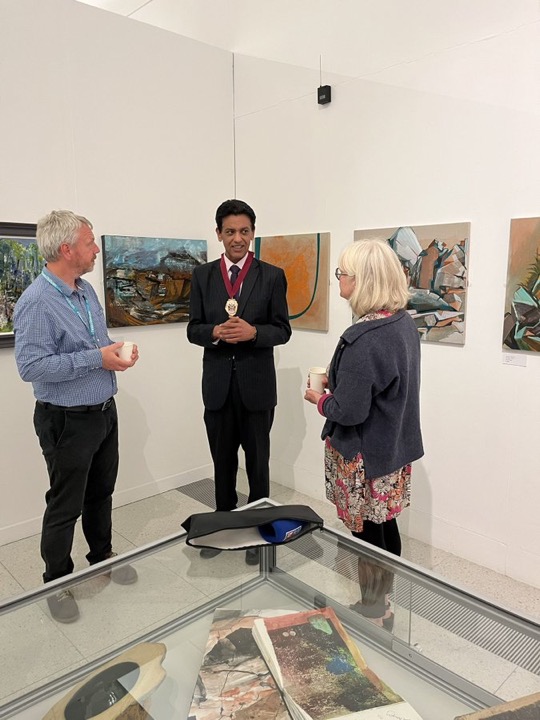
|
Land Marks29/10/2021 — 19/03/2022 Land Marks was a project funded by Arts Council England about the quarries in West Yorkshire. It toured four galleries in the area over a period of eighteen months. The work interacted with the landscape by recording the activity that occurred in the quarries some of which have been rewilded. |
Dean Clough Gallery, Gallery Oldham, The Civic Barnsley, Globe Art Studios, West Yorkshire | Details |
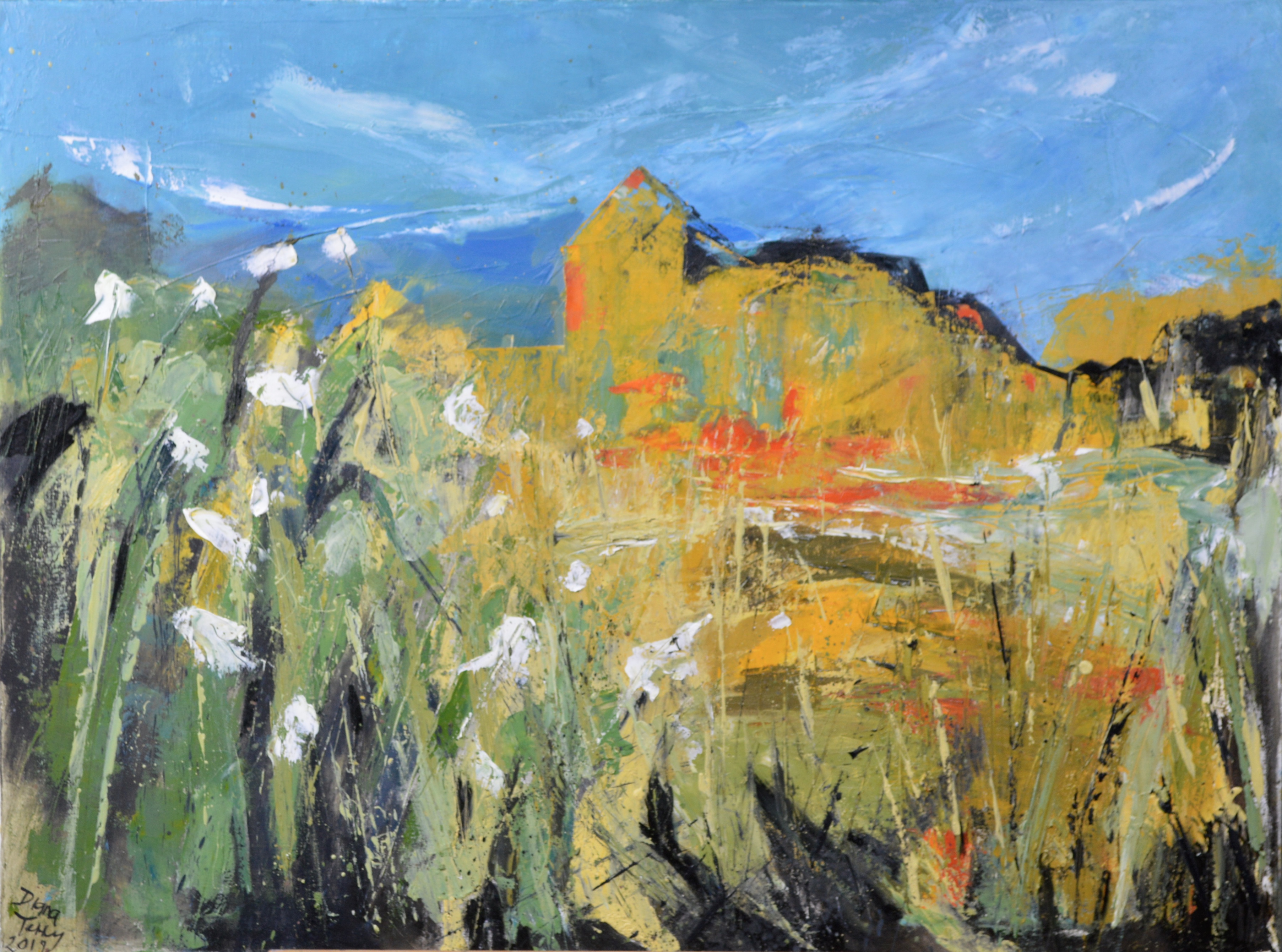
|
Wirral Society of Art02/08/2019 Regular exhibitions as a member of WSA. |
The Williamson, Birkenhead, Merseyside, Wirral, Merseyside | Details |
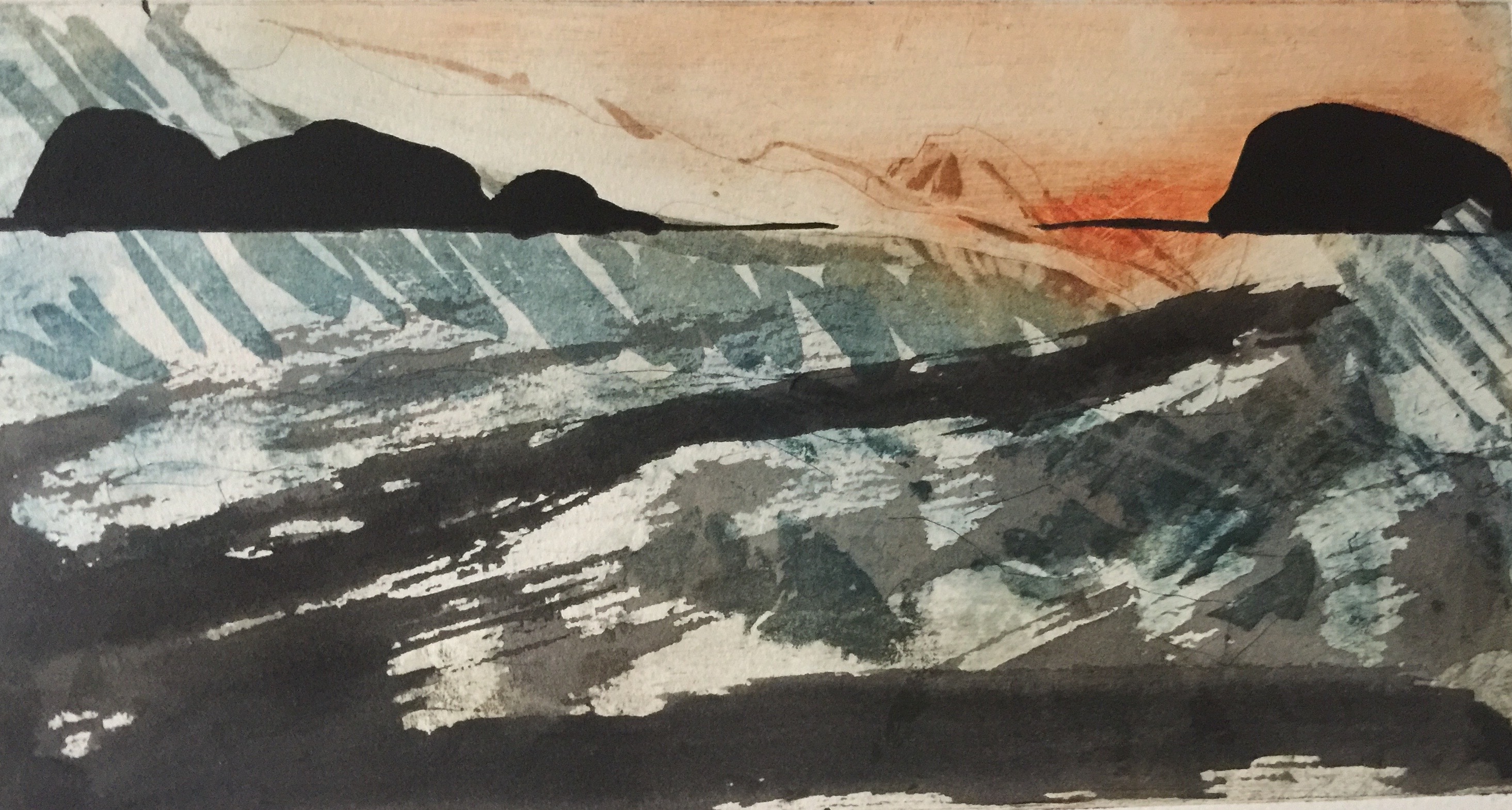
|
Royal Society of British Artists21/01/2018 — 31/01/2018 Open Call to be exhibited with the members of RSBA. |
Mall Galleries, London | Details |
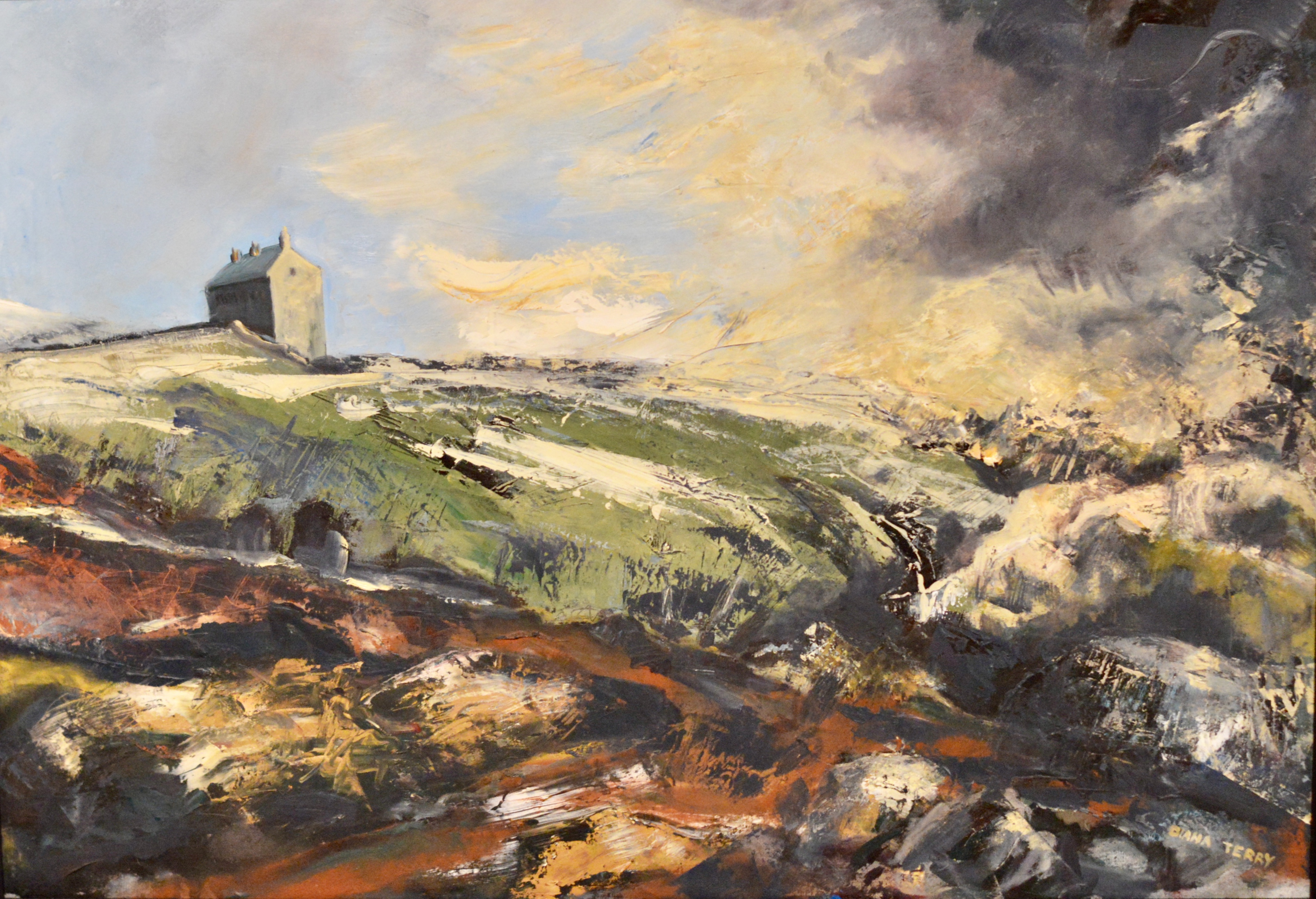
|
Permanent collection01/08/2016 — 18/08/2019 My work was bought by the gallery for their permanent collection. |
Gallery Oldham, Oldham | Details |

